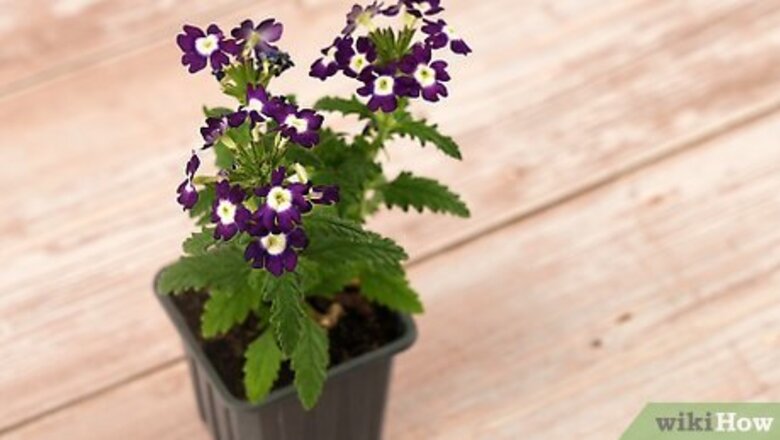
views
- Make a knot on 1 end of a ⅛ to ¼ inch (3-6 mm) thick nylon rope. Take your plant out of its pot and stick the other end of the wick into the center of its roots.
- Then, thread the wick through the pot’s drainage hole. Repot your plant, set it over a 16-32 oz. (0.5-0.9 L) vessel of water, and submerge the wick.
- Or, stick the wick 1-2 inches (2-5 cm) deep into the soil at the base of your plant’s stem. Tie a weight to the other end and place it in a water vessel above your plant.
Inserting the Wick in the Root Ball
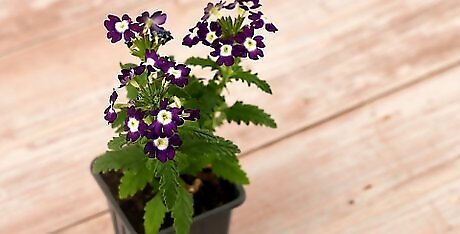
Take your plant outside to a workbench or garden shed. In this water wick method, you take your plant out of its pot to add the wick. This can get a little messy, so just take your plant and your supplies outside to work. If you don’t have a workbench or a good place to work outside, lay down newspapers on your table or floor. If your plant isn’t already in a pot with a drainage hole, this is a great opportunity to repot it in one.
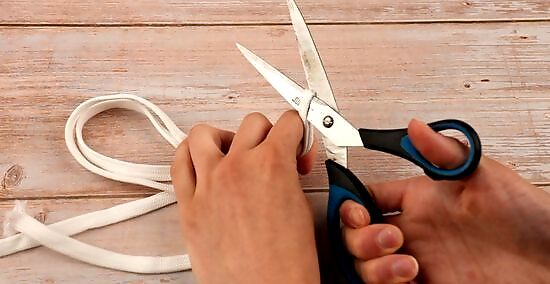
Cut your wick, make a knot in the end, and soak it in water. Take a ⅛ to ¼ inch (3-6 mm) thick nylon rope and snip off a long enough section to insert one end into the middle of your plant and the other into a vessel of water below it. Make a knot on one end of the wick and place it in a bowl of water. Twine, shoelaces, and strips of T-shirt fabric also work well as your wicking material.
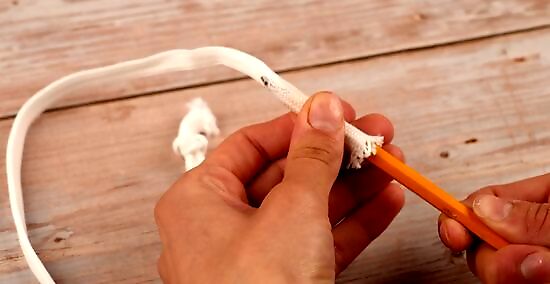
Stick the sharp end of a pencil through the end of your wick. This helps you pierce your plant’s soil and insert the wick inside. If you have trouble getting the pencil into the wick, just wrap the wick around the pencil. Make sure the pencil and wick are secured, then set it aside for later use.
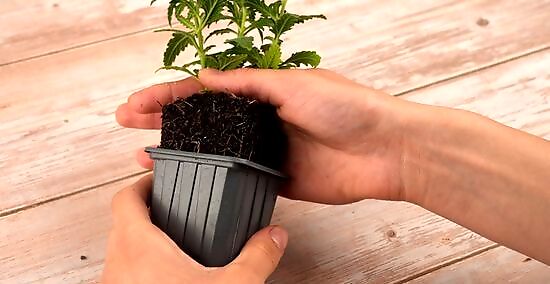
Take your plant out of its pot. Turn your plant on its side or upside down and cup your hand around the base of its stem. Then, use your other hand to knock the end of the pot to gently slide the plant out. If your plant is large, ask a friend to help you take it out to prevent any damage.
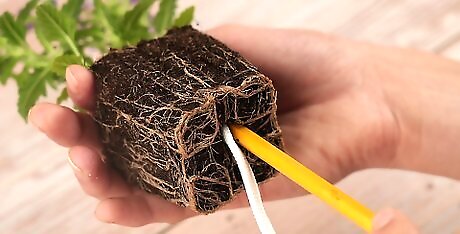
Stick the pencil and the wick into the root ball of your plant. Use the tip of the pencil to push the wick inside the bottom of your plant. Just push it in until it’s about halfway deep in the soil. Then, remove the pencil. Place 2-3 wicks inside your plant if it’s a variety that needs a lot of water, or it’s in a pot bigger than 10 to 12 inches (25-30 cm) wide.
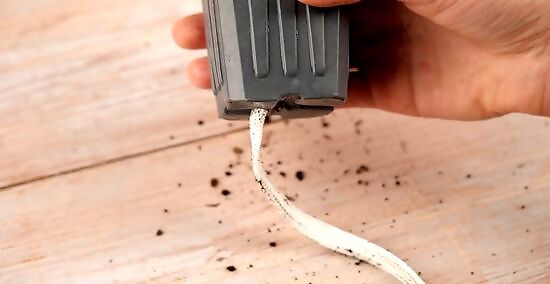
Place the plant in its pot and thread the wick through the drainage hole. Gently lower your plant back into the pot, moving the wick so it falls through the drainage hole in the bottom of the pot. Be very careful and do not tug hard on the wick, as that can remove it.
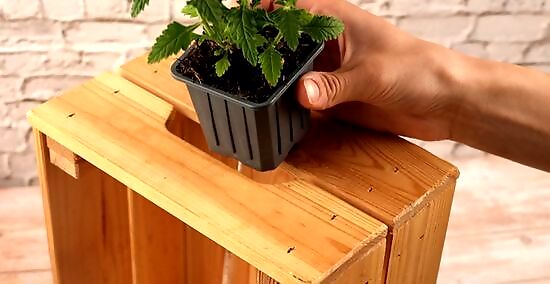
Fill a vessel with water, set your plant above it, and insert the wick. For most plants, a jug, jar, or bowl with 16 to 32 ounces (0.47-0.9 L) of water is enough to keep it hydrated while you’re away. Place your plant slightly above the vessel of water, such as resting it on a slatted board or a short plant stand. Then, simply let the wick fall into the water. The wick works through capillary action, which is the process of water sticking together and climbing up a porous material, like string. When the water reaches your plant’s soil, it’s able to suck up the water through its roots. All plants have different watering needs, so consider how much water your plant usually drinks when filling up your vessel. Make your wicking system a few days before you leave to see how much water your plant absorbs.
Placing the Wick on Top of the Soil
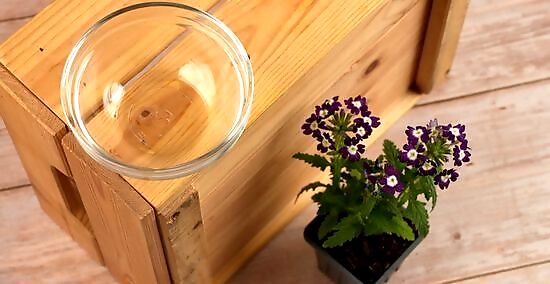
Set a large bowl above your plants and arrange them around it. In this water wick method, you use the wicks and gravity to water your plants. Get out a large jug, bowl, or pot and set it on the floor or table where you keep your plants. Just rest it on a pile of books, a tray, or a chair to make it taller than your plant pots. Then, place your plants around the vessel. If you only have a few plants, or your plants have varied watering needs, use a separate water vessel for each plant.
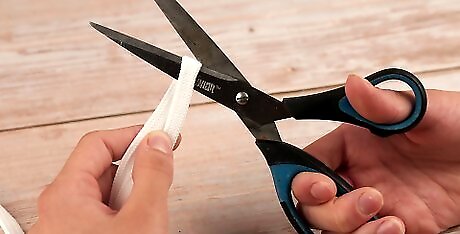
Measure and cut the wicks, then tie a weight to the end of each one. Cut a thin ⅛ to ¼ inch (3-6 mm) thick nylon rope, shoelace, or strip of fabric for each plant. Make sure the wick stretches tautly from the soil at the base of your plant’s stem to the bottom of the vessel. Then, tie a bolt, screw, or other heavy weight to one of its ends. The weighted end is the end that you place in the water, which keeps the wick submerged. If you’re using a single water vessel for multiple plants, tie a knot around all of the wicks instead of individual weights. Give each plant its own wick to make sure it gets properly watered.
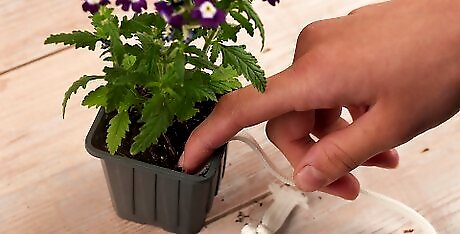
Use your finger to insert the unweighted end of each wick into the soil. Take the unweighted end of the wick and place it near the base of your plant’s stem. Then, use your finger or the end of a pen to push the wick about 1 to 2 inches (2-5 cm) deep into the soil. Pat down the soil around the wick to ensure it’s snug and secure in the soil. If your plant usually needs a lot of water, add 1 to 2 more wicks to the soil. You can put a 2-inch layer of compost. Mix it into the soil. You should replenish and add compost because the plants use organic materials.
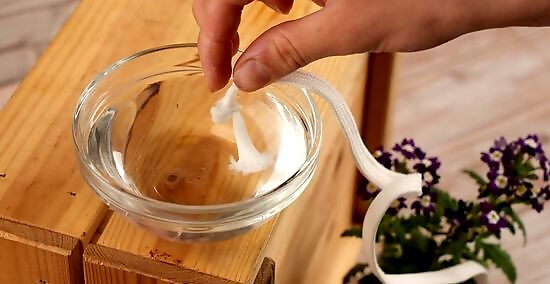
Fill your vessel with water and place the weighted wick end inside. Add water to the very top of your water jug or pot, then simply submerge the other end of the wick inside. The wick slowly saturates with water and wets your plant’s soil.
Making a Self-Watering Pot
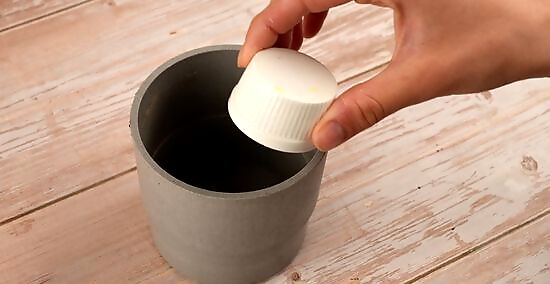
Set a 2-3 inch (5-8 cm) riser inside a decorative pot with no drainage holes. A self-watering pot has a water reservoir at the bottom, allowing your plant to take up all the water it needs without you doing a thing. Just get out a pot that’s 1 to 2 inches (2-5 cm) taller and wider than your plant’s pot. Then, create the reservoir by placing a 2 to 3-inch (5-8 cm) tall riser, like a small plant saucer, brick, or piece of heavy-duty styrofoam, in the bottom. You rest your plant in its current pot on the riser, which lets it absorb the water without being submerged in the reservoir. Alternatively, use a glass or plastic bottle or container in place of a decorative pot. Just make sure your plant’s pot rests snugly inside and there’s space in between the bottom of the bottle and the pot to add water.
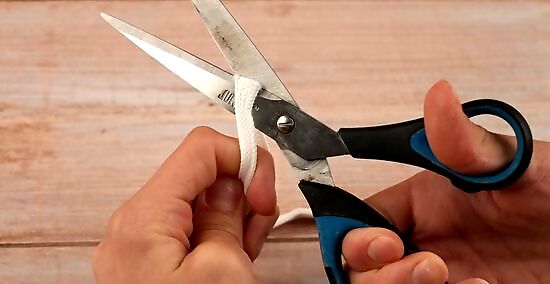
Cut a wick long enough to reach the reservoir and the bottom of your plant. Rest your plant on top of the riser inside the decorative pot. Then, measure and cut a ⅛ to ¼ inch (3-6 mm) thick nylon rope, piece of fabric, or shoelace so it touches the bottom of the decorative pot and reaches about halfway up your plant’s pot. Plants that require a lot of water, or are in larger pots, usually need about 2 to 3 wicks.
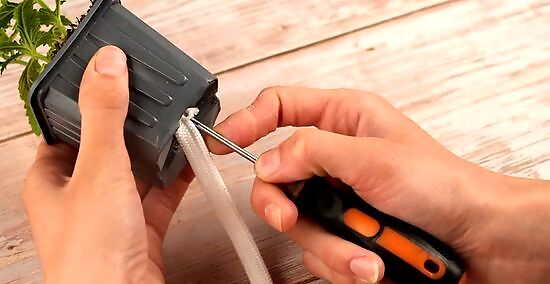
Use a screwdriver to insert the wick inside the bottom of your plant. Hold one of the ends of your wick over a drainage hole on the bottom of your plant. Then, take a screwdriver, pen, or chopstick and use it to push the wick about halfway deep inside your plant’s pot.
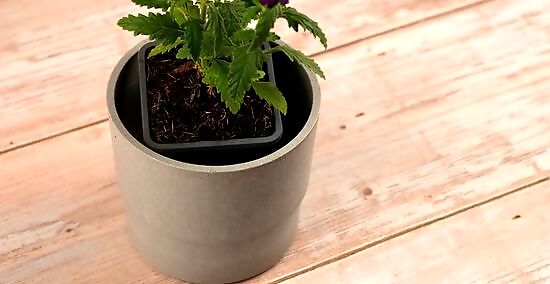
Fill the decorative pot’s reservoir with water and set your plant inside. Add water to the bottom of the decorative pot, filling it just below the top of your riser. Then, rest your plant on top of the riser, making sure the wick dangles in the water. When your plant is thirsty, it sucks up water through the wick. Just peek inside the pot to check on the water level of the reservoir to see if you need to add more water, or lift up your plant.

















Comments
0 comment